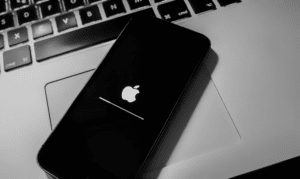
If you’re using Gmail ads as part of your digital marketing campaign, you may be surprised to hear this feature will be discontinued as a standalone program on July 1, 2021.
However, this doesn’t mean Google will no longer be offering the option to use Gmail ad targeting. Instead, Gmail ads will be rolled into Discovery ads, a program launched in 2019 with the capability to target a vast audience across multiple Google touchpoints.
How do Gmail Ads Work?
Gmail ads are displayed in the Promotions and Social tabs of the Gmail inbox. Many of these ads are expandable and interactive, providing consumers with a more personal format for ad viewing that can mimic the shopping experience. When expanded, these ads can contain engaging visual media such as images, video, or even embedded forms.
Gmail ads are first shown as a collapsed subject line similar to the subject line of an email. By clicking on this collapsed ad, the user can view it as a full-size, interactive email. The ads can offer interactive options, including clicking through to the landing page of the advertiser. They can also be saved or forwarded like normal emails, making them particularly easy to share.
Transitioning from Gmail Ads to a Discovery Campaign
If Gmail ads have been a solid source of leads for you in the past, you may be frustrated to learn that they will sunset later this year. However, there are plenty of benefits to transitioning to a Discovery campaign, including the ability to recreate your current Gmail ads setup.
Discovery ads can help you expand your reach beyond Gmail to other Google-owned platforms such as YouTube and the Discover feed on the Google Search app. Most importantly, Google leverages their detailed understanding of consumers’ intent to ensure your ads engage the right audiences.
As you dive into setting up your new Discovery ads campaign, there are a few things you’ll need to keep in mind during this transition:
- Budget. Considering the expanded reach of Discovery ads, you should allocate a greater amount for this campaign than you would for standalone Gmail ads. In fact, Google recommends calculating your Discovery ads budget by doubling your current budget for Gmail ads. After all, you will be connecting with a much wider audience on a diverse range of surfaces.
- Bidding. Use Target CPA (tCPA), a Google Ads Smart Bidding strategy, to get the maximum number of conversions at or below your chosen target cost-per-action. You may either use the bid suggested by Google or increase your average CPA from the past month by 20%. As your campaign optimizes and improves over time, you can decrease the tCPA accordingly.
- Targeting. For the most part, the audiences available to Discovery campaigns closely resemble the ones in Gmail ads. To facilitate the best performance for Discovery ads, simply choose similar audiences as for your Gmail ad campaign. If, however, you have been targeting keywords in Gmail ads, you’ll need to create a custom audience based on your Gmail ads’ top-converting keywords.
Reporting & Charges: Comparing Discovery and Gmail Ads
Another difference between the two ad campaigns revolves around reporting and charging for clicks and engagement. As Gmail ads are separated into two categories, single business ads and multi-retailer ads, there have been different reporting and charges even within this standalone platform.
Single business Gmail ads only feature one business, and “clicks” are counted when a user first clicks on the collapsed teaser line to expand it into the full ad. Multi-retailer ads, on the other hand, display multiple products from different advertisers and direct the user to each retailer’s product page. In this case, “clicks” are counted when the user clicks through to the product page, not when the collapsed ad teaser is expanded.
Discovery campaigns report both “clicks” and engagement. Engagement refers to the user’s first interaction with the ad, opening and expanding it. “Clicks” are calculated when users are sent to your website from the ad. However, you are charged for the initial interaction with the collapsed teaser (engagement), not the click that takes the user to the product page.
Understanding the Changes
It’s not totally clear why Google has chosen to discontinue Gmail ads as a standalone feature. However, with the success of Discovery ads in recent years, it’s not altogether surprising that Google is consolidating its ad formats under this single campaign type.
By creating demand higher in the funnel, Google can compete with social media platforms like Facebook and Instagram for top of funnel ad dollars without the headache of running a social media network.
For more details from Google about this decision, check their help article. You can also find information specific to Discovery ads here.
Are you a Qiigo client with questions about these new changes to Gmail ads? Please reach out to your Account Manager to understand how to thrive during this transition.
